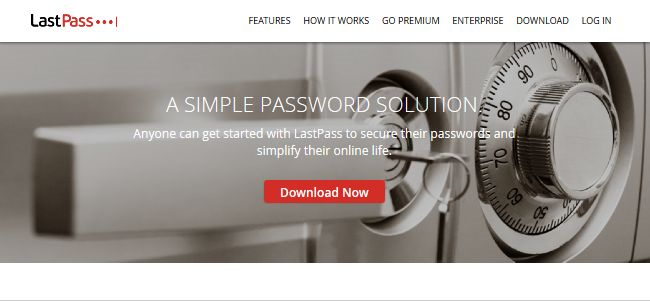What is LastPass?
LastPass is a dangerous program that is hidden under the guise of legitimate and useful software. The bogus program supposedly can keep your passwords safe and sound. However, it’s not true, it was designed for one thing only – advertising various questionable third-party products. Once installed, LastPass hacks your browser in a such way that you will see countless pop-ups while browsing. Such ads often conceal underlying content that of course reducing the browsing experience. Here are some consequences of LastPass: a lot of pop-up ads, annoying redirects, low computer performance, frequent system crashes. In addition to that, storing passwords in this program, you run the risk of losing them at any time. Therefore, you are advised to remove LastPass as soon as possible to prevent further infections. In order to do this, we prepared this step-by-step guide.

How LastPass infects your PC?
LastPass adware is often distributed through trojans and pop-ups on suspicious websites. You can also get this adware on software crack, file sharing, and torrent websites.
When installing something you’ve just downloaded from the internet, be very careful, check the license agreement properly. Always choose Custom or Advanced installation type, as it can prevent you from having adware on your computer. Make it a rule to read the terms and conditions during the installation of any program you’ve downloaded from the internet.
There are three most common ways of getting LastPass on your computer:
- Bundling method: this method is the most common in malware distribution. Cybercriminals put in the malware to some free software applications. The user downloads this program and installs it, but the malicious program also getting into your computer.
- Don’t be careless, malware applications can be attached to spam emails.
- Try to avoid visiting suspicious websites, they can infect your PC with LastPass.
How to remove LastPass from your computer?
The best and easiest way to remove LastPass from your computer is to use a special anti-malware program that has this threat in its database. The program is fully automated, all you need to do is to download and install it. Once you’ve installed an anti-malware application, it will scan your system and remove all the threats.
Norton Antivirus – it scans your computer and detects various threats like LastPass, then removes it with all of the related malicious files, folders, and registry keys. After deep scanning of your system, it will easily find and delete LastPass. Use this removal tool to get rid of LastPass for FREE.

How to remove LastPass manually
Remove LastPass from Control Panel
In order to get rid of LastPass, the first thing you need to do is to uninstall a malicious program from your computer. When removing LastPass, try to find suspicious recently installed programs and delete them too, as it’s pretty common that any malware comes with some other unwanted programs.
Windows XP:
- Select Start.
- Control Panel.
- Then choose Add or Remove Programs.
- Search for LastPass.
- Click Uninstall.
Windows 7/Windows Vista:
- Select Start.
- Then Control Panel.
- Choose Uninstall a Program.
- Find LastPass and choose Uninstall.
Windows 8/Windows 8.1:
- Open the Menu.
- Select Search.
- After that choose Apps.
- Next Control Panel.
- Then as in Windows 7, click Uninstall a Program under Programs.
- Find LastPass, select it and choose Uninstall.
Windows 10:
- Click on the Start button (or press the Windows key) to open the Start menu, then select Settings at the top.
- Choose App & features on the left menu.
- On the right side, find LastPass and select it, then click on the Uninstall button.
- Click on Uninstall to confirm.
Note: If you can’t find required program, sort programs by date in Control panel and search for suspicious recently installed programs. If you still can’t locate any suspicious program or not sure what some application is for, we advise you to use SpyHunter free scanner in order to track down what malicious program is infecting your system.
LastPass won’t uninstall
There are a lot of options in any Windows version for removing applications. Still, not all the programs can be completely deleted using these options. Adware, Badware and Potentially Unwanted Programs (PUPs) are too stubborn to be removed, more than that, there are created this way, created to be hard to get rid of them. That’s why sometimes you can’t uninstall them using standard Windows options. You’ll probably get this message: “You do not have sufficient access to uninstall LastPass. Please, contact your system administrator.” To remove stubborn LastPass, you can use SpyHunter removal tool, it will completely remove LastPass from your computer. Or you may try to use Safe Mode:
For Windows XP, Vista, 7
- Turn off your PC;
- Turn it on and immediately press F8 button;
- You’ll see Advanced Boot Options menu;
- Select Safe Mode with arrow buttons;
- In Safe Mode navigate to Control Panel, then choose Uninstall a program and remove “LastPass”.
For Windows 8/8.1 and 10
- Press the Win+R buttons, type msconfig in box and press Enter;
- Choose Boot tab, and click on Safe Boot check box;
- Select the type of Safe Mode: Minimal or Network;
- Press OK and reboot your PC;
- In Safe Mode navigate to Control Panel, then choose Uninstall a program and remove “LastPass”.
You can also perform Clean Boot. You need to turn off all the startup programs that may be the reason why the program won’t uninstall.
- Press Windows + R;
- In the Run window type msconfig;
- Choose Services section;
- Find Hide all Microsoft services line, tick the box;
- The click Disable all;
- Return back to General section;
- Find the line Selective startup and untick the box Load startup items;
- Select Apply, then OK;
- Reboot your PC;
- Remove LastPass from Control Panel.

